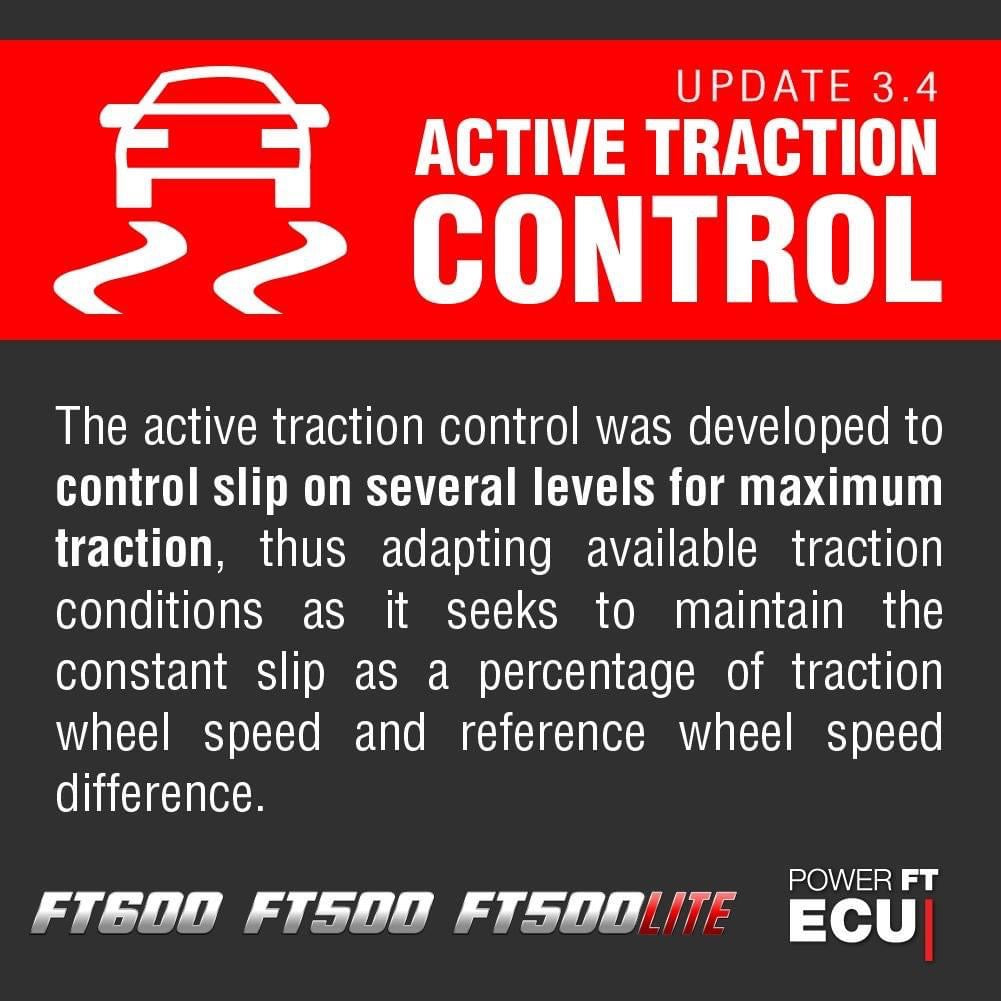What is traction control and why is used on drag racing?
Traction control is a system that is designed to help a vehicle maintain traction with the road surface, especially in slippery or low-grip conditions. It does this by detecting when the wheels are slipping by comparing the wheel speed between front and rear tires and applying the brakes (on OEM applications) or reducing engine power in a few different ways like, retarding ignition timing, reducing the boost, closing the throttle body (on electronic throttle body applications) ignition cut and more to help the wheels regain grip.
In drag racing, traction control is often used to help the vehicle launch more effectively off the starting line and maintain traction through the first few seconds of the race. This can be especially important in high-powered vehicles, as the torque and horsepower of the engine can easily cause the wheels to spin and lose traction. By using traction control, the driver can maintain control of the vehicle and get a better launch, which can translate into a faster time.

The traction control sounds good and it does work but the idea behind it is to use as little traction control as possible on the tune side, Chassis adjustment, tire type, pressures, weight distribution plays a big role. If your alignment is good, weight distribution and every chassis / suspension part is working good then the traction control will interfere just when it’s needed allowing the computer to free up all that power that your engine can produce. In the other hand with a bad alignment, bad weight distribution and the wrong tires, the traction control is going to be active constantly trying to compensate for that traction loss and it will result in way less power being delivered.
In simple words- is an assistant but don’t expect it to fix all traction issues.
On the traction side there’s other things like weight plates, different spring rates, longer wheelbase and more that will be covered in another blog.
In the front wheel drive application it is now getting integrated on older cars that didn’t had the option from the factory in a few different ways, On Hondas is very common to use the integra rear wheel disc conversion (usually comes with factory ABS) In that case we can use that factory abs ring or wheel tone by adding this kit https://jd-tuning.com/products/almanzar-motorsports-wheel-speed-kits-honda
Or if it does not have factory ABS, then it can be done by using the one that says- rear disc or rear drum and it will be getting the signal or speed from the lug nuts.

In the future this will be available for more vehicles but also you can make your own brackets and use one of the gear tooth sensors that we offer.
This can be integrated with almost any standalone ECU on the market. Traction is key, you can make all the power but if you don’t put it to the ground you won’t be able to make those numbers.
Questions about this system and the options?
Email us- jdtuningmotorsports@gmail.com








